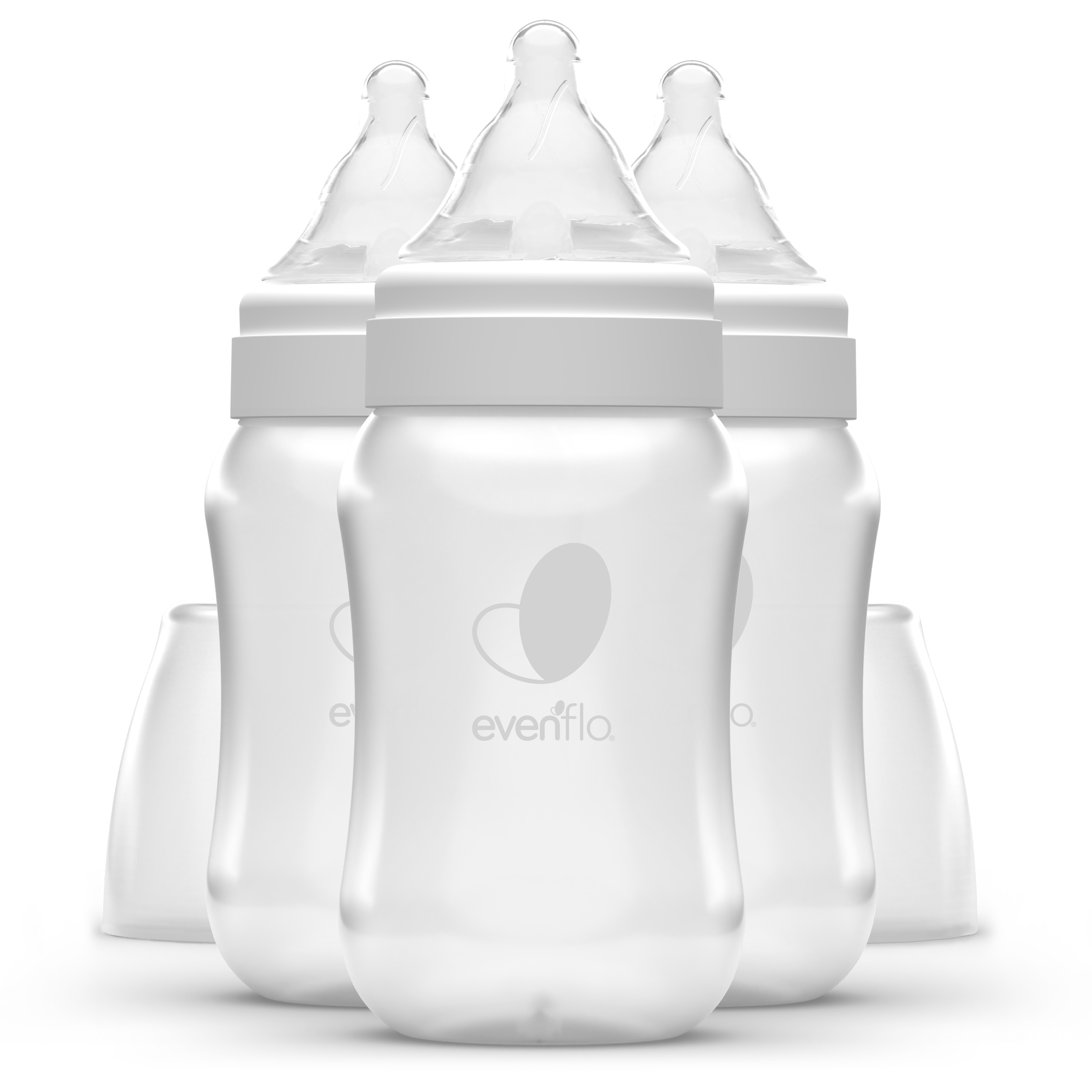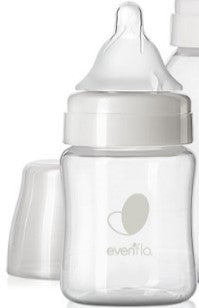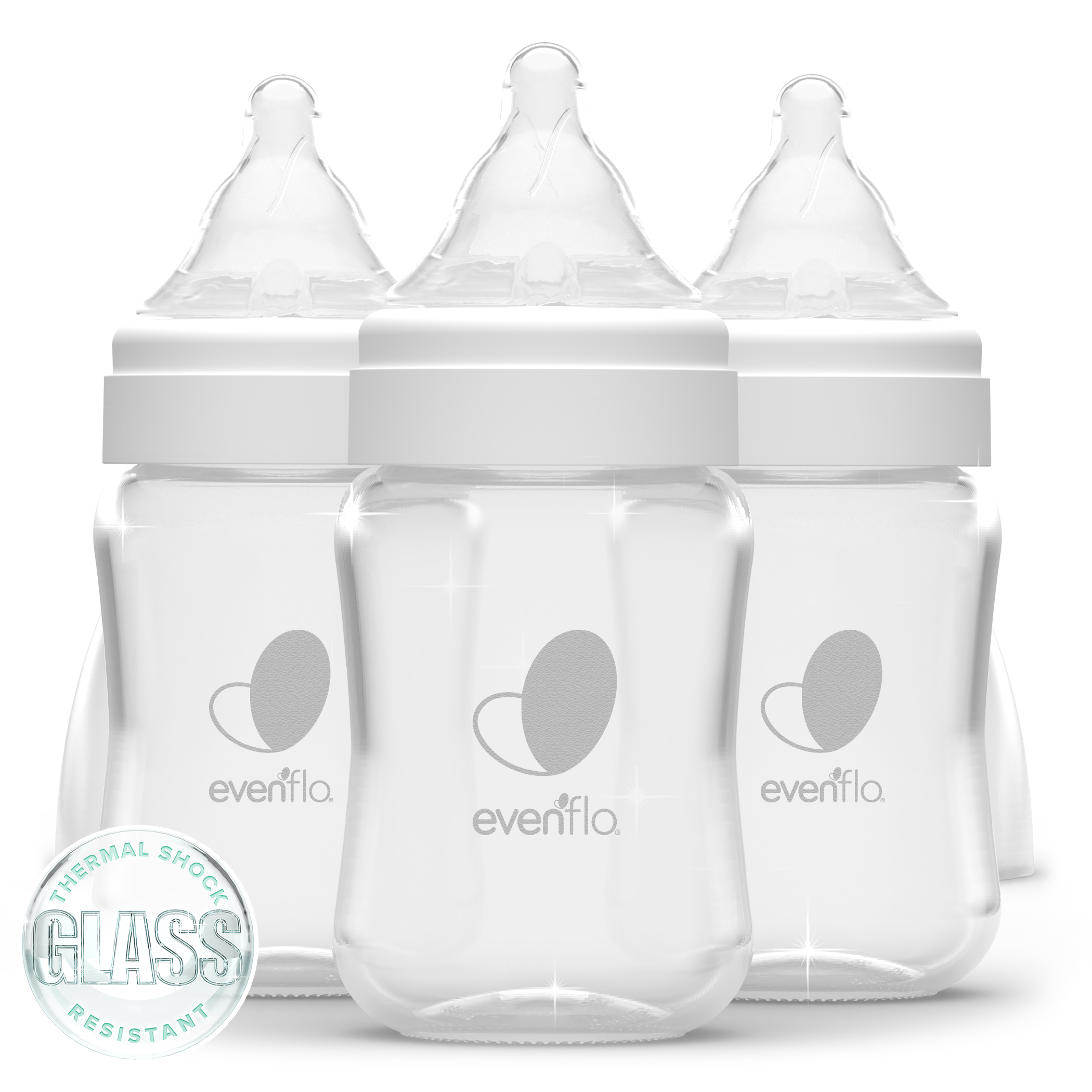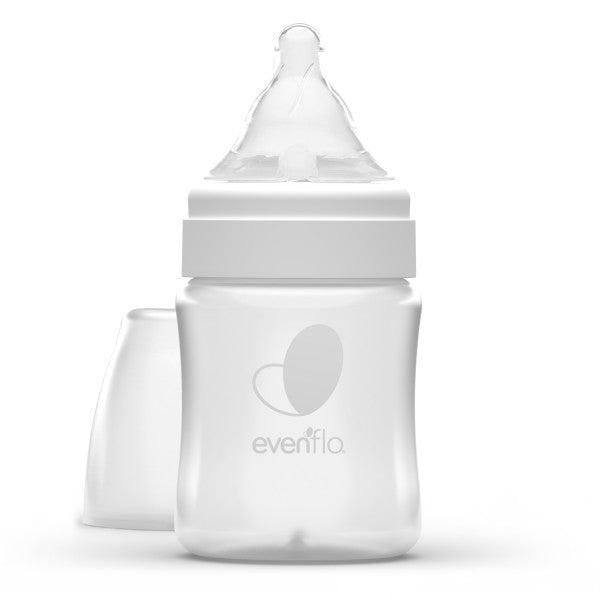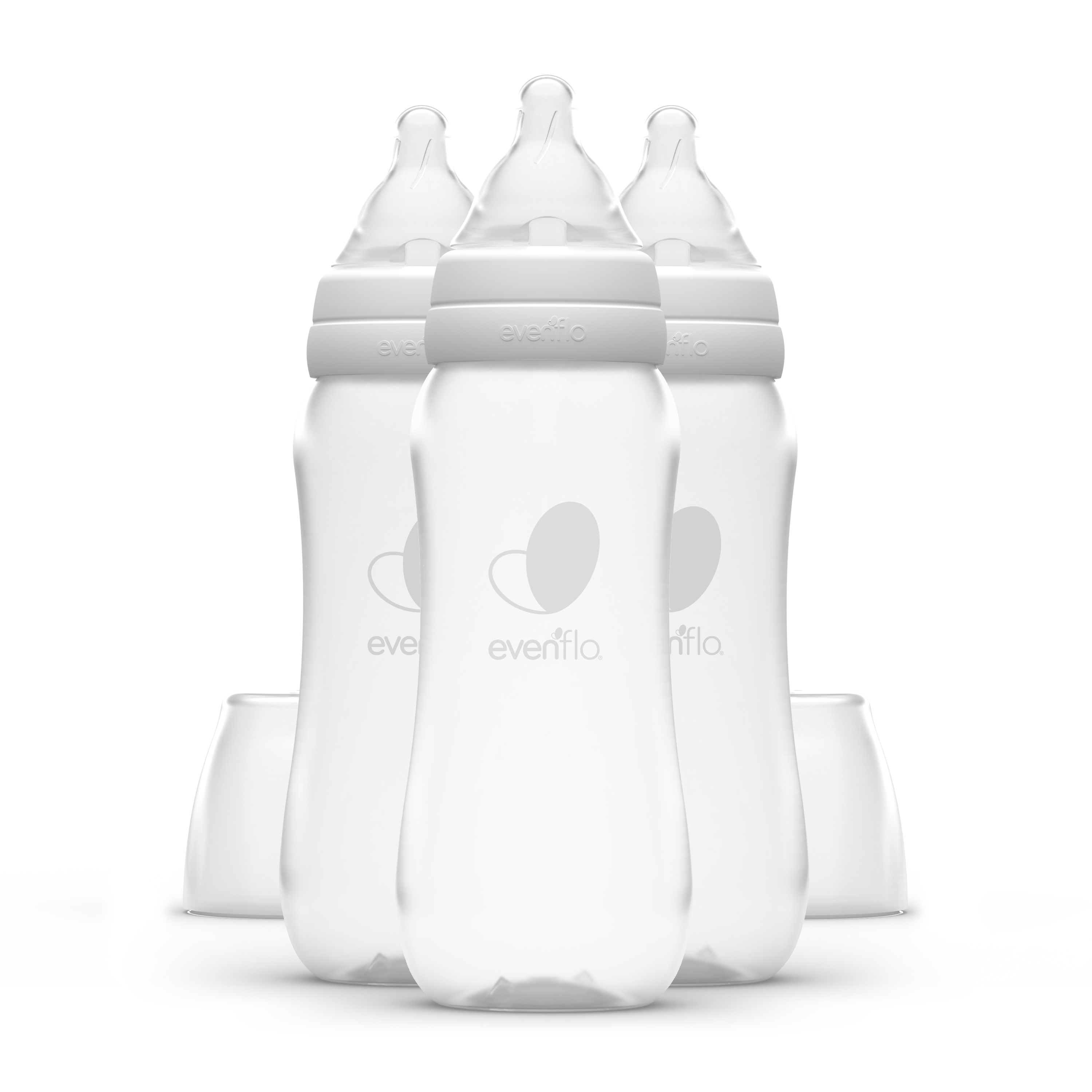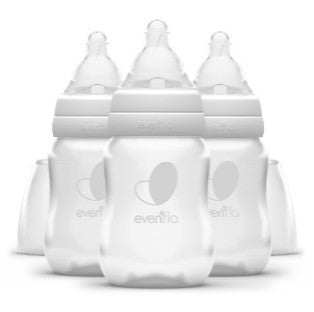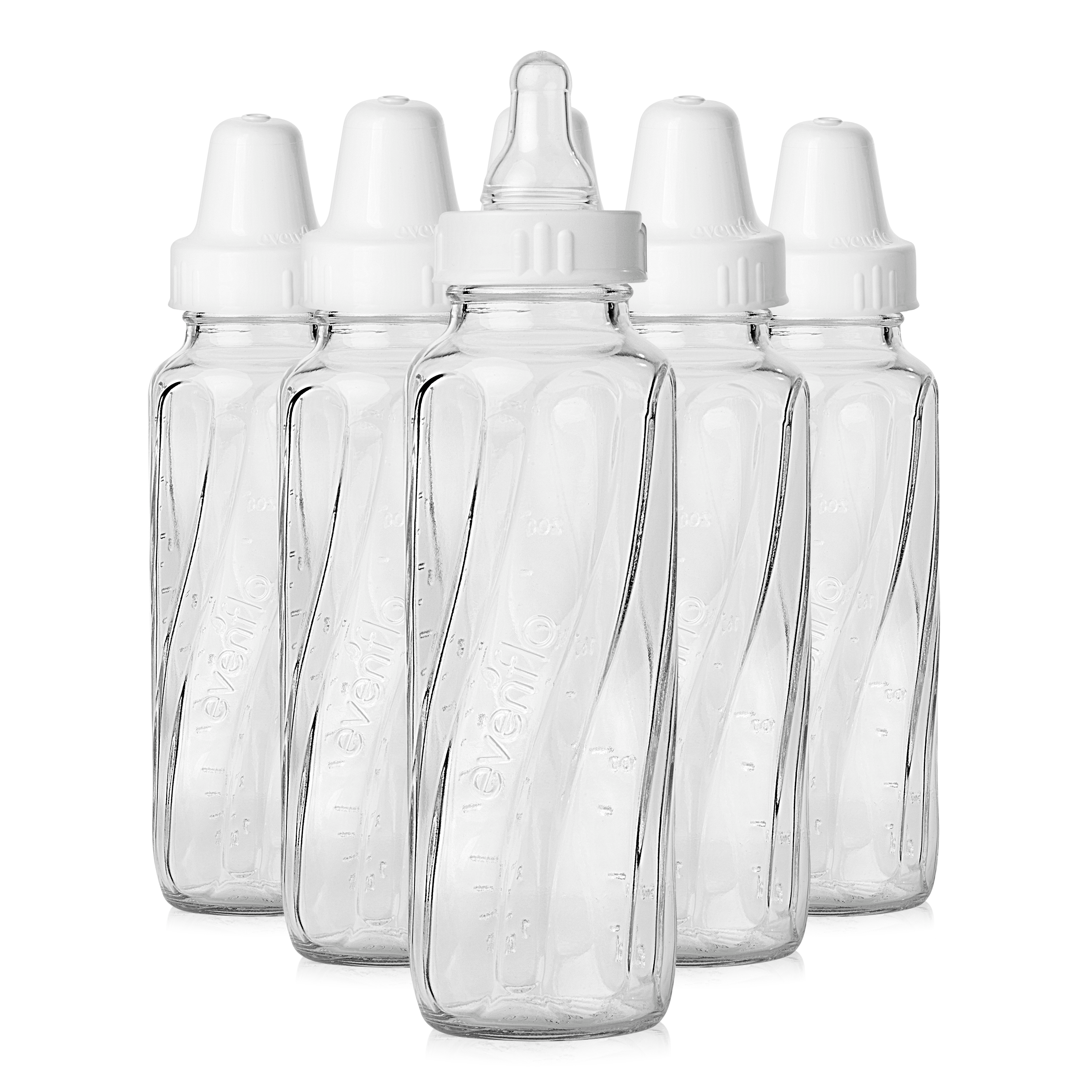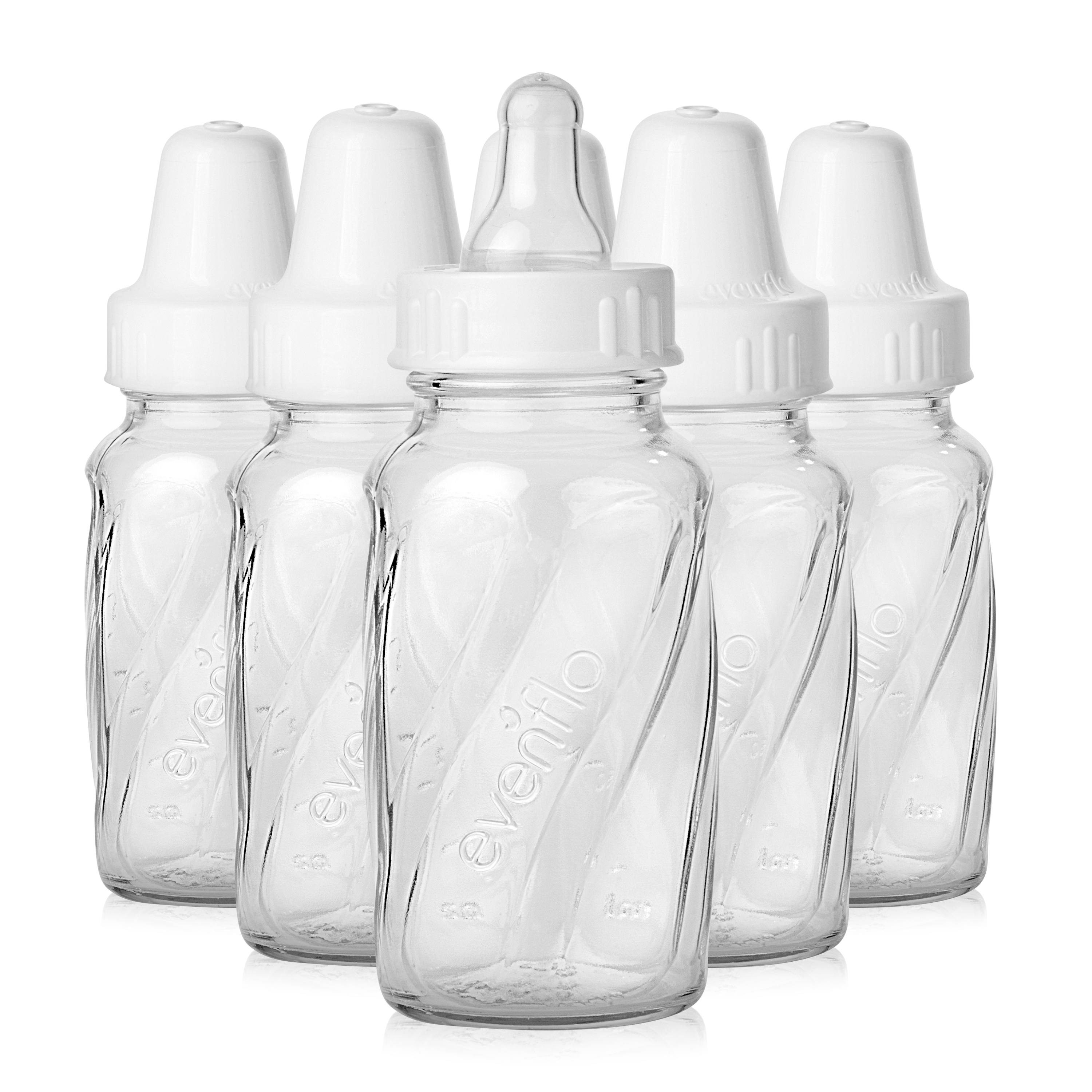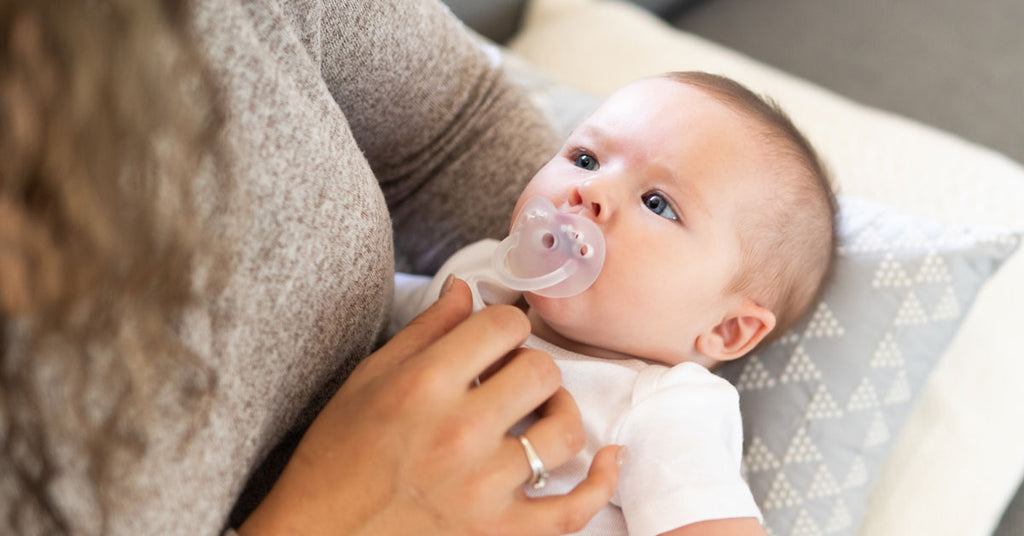
When to Introduce a Pacifier

The answer to the question of when to introduce a pacifier is surprisingly varied. You may have heard that it is important to wait 3 (or even 6!) weeks before you give your baby a pacifier. Or to at least wait until breastfeeding is “well established.” It was previously thought that pacifier use would lead to the end of exclusive breastfeeding or result in early weaning. Drum roll…new research has turned these old answers on their head.
Researchers now say that moms of healthy, full-term newborns have a green light to introduce a pacifier whenever they want to. Pacifier use from birth, or after breastfeeding is established, does not affect the prevalence or duration of breastfeeding. Yay! One less thing to worry about, and less mom guilt!
So why do we still hear that moms should wait to introduce a pacifier? One reason is that many printed materials have not been updated to reflect the most current research. Even when printed materials are updated, there are countless versions still circulating with inaccurate information, including information on the internet. Another reason we continue to hear inaccurate information about pacifier introduction is because we birth and breastfeeding professionals are comfortable with the old information. It can be hard to let go of ideas we have carried for so long. But It. Is. Time.
Now that you have a green light to be The Decision Maker, here are a few things to consider when offering a pacifier:
- Pacifier shape—start with a shape that helps your baby’s mouth suck in a similar way as at the breast. Read Why the Shape of Your Baby’s Pacifier Matters.
- Try a pacifier with a curved guard. Babies can form a tighter latch when the pacifier guard curves toward the face, making it easier for babies to keep the pacifier in the mouth.
- Don’t replace the pacifier right away if your baby spits it out. Your baby may need to communicate something to you—and he needs his mouth to do that. He may need to cry to tell you he is cold, or that his diaper needs to be changed. He may need to suck on his hands to show you he is hungry. Having the pacifier popped back into the baby’s mouth over and over displaces the opportunity to communicate.
- If you find yourself offering the pacifier because you want to give your nipples a little more time to rest between feedings, get help. You are welcome to still offer the pacifier! But using a pacifier to delay breastfeeding should set off an internal alarm that you need to talk with someone about breastfeeding, and possibly get help with latch and positioning.
So now you know the truth about when to introduce a pacifier to your baby. Do you have to offer a pacifier? Of course not. Can you wait to offer a pacifier? Sure—you are The Decision Maker for your baby (and always have been!). But if you do want to introduce a pacifier to your breastfed baby, you do not have to wait to do so.

